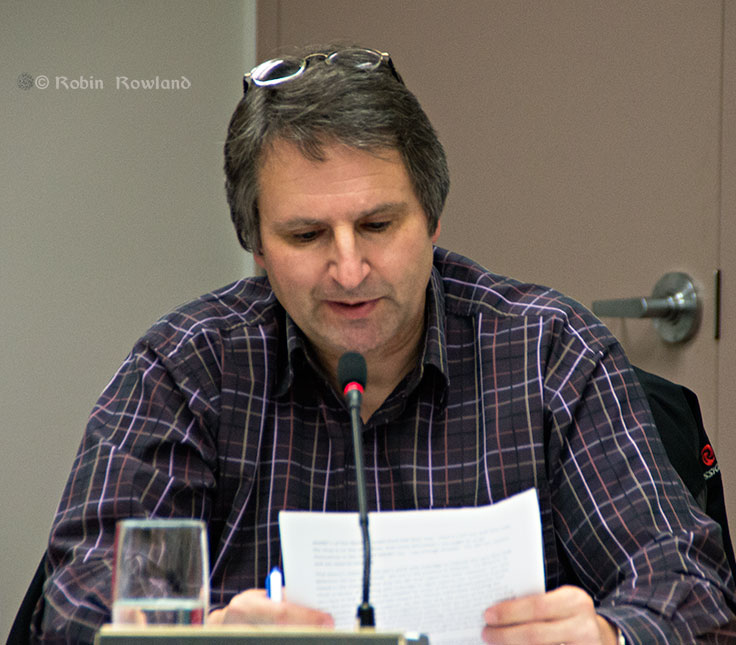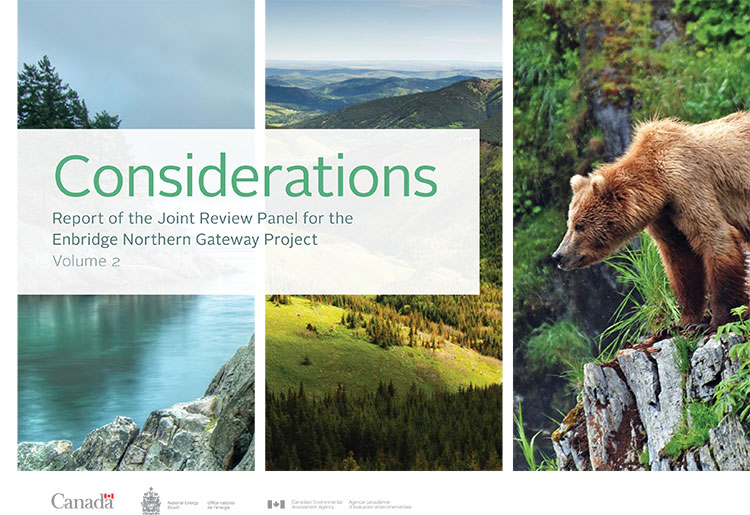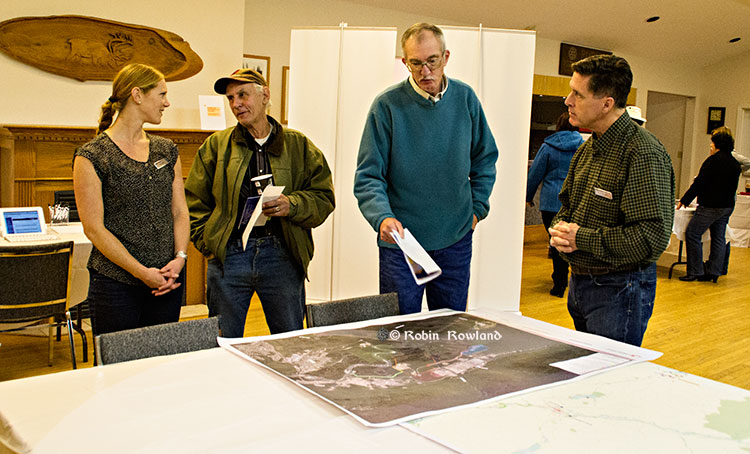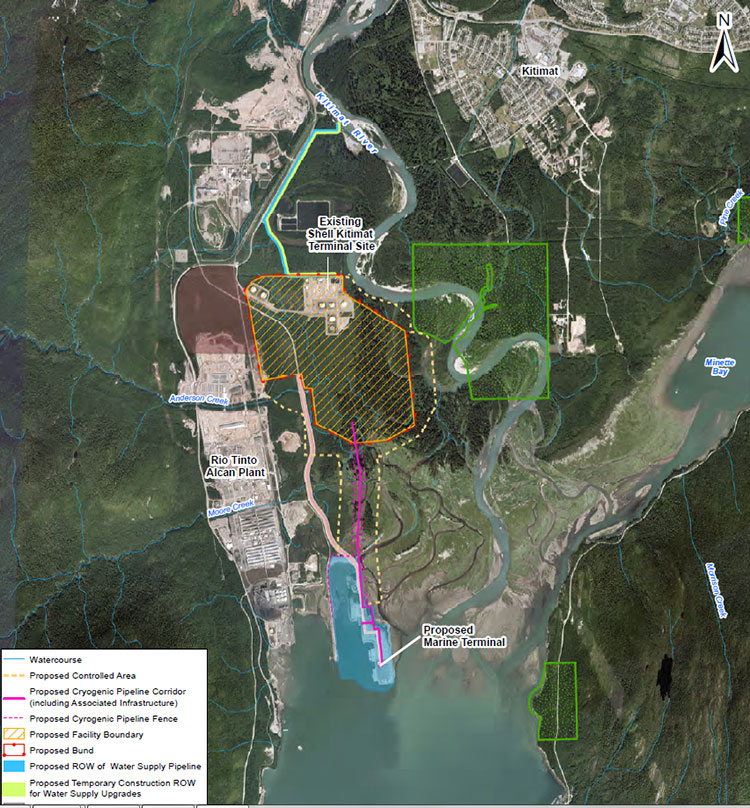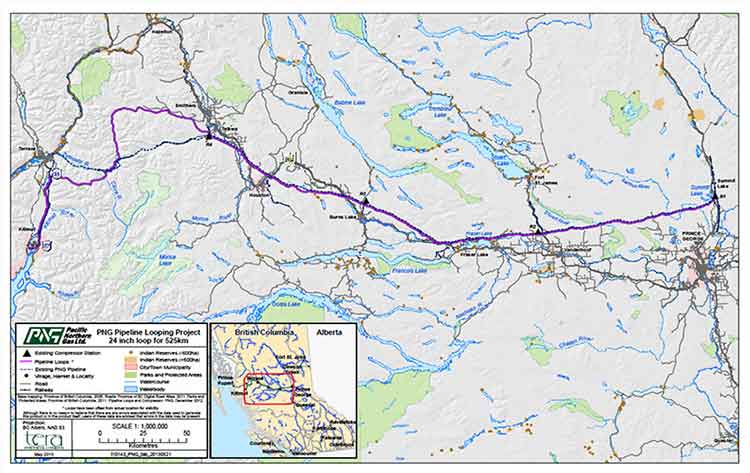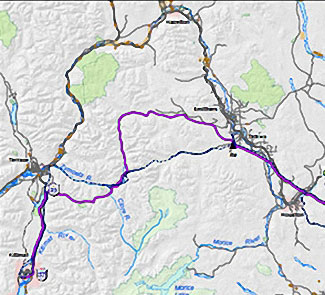The Department of Fisheries and Oceans has handed responsibility for fish and fish habitat along pipeline routes over to the National Energy Board. The same agreement also gives the National Energy Board responsibility for dealing with First Nations fisheries if a pipeline or power line crosses their traditional territory.
DFO and NEB quietly announced a memorandum of agreement on December 16, 2013, that went largely unnoticed with the release three days later of the Joint Review Panel decision on Northern Gateway and the slow down in news coverage over the Christmas holidays.
Update January 16, 2013: DFO clarifies relationship with NEB on fisheries protection along pipeline routes
As of December 16, 2013, Enbridge no longer has to apply to DFO for permits to alter fish habitat along the Northern Gateway route. It was also on December 16 that Kinder Morgan filed its application with the NEB for the expansion of its pipeline from Alberta to Burnaby.
Fish and fish habitat along those pipeline is now the responsibility of the Alberta-based, energy friendly National Energy Board.
Applications submitted to the NEB shall be reviewed under the Fisheries Protection Provisions of the Fisheries Act to determine if impacts shall occur, and if an authorization will be required under the Fisheries Act. The NEB shall also become responsible to determine if proposed projects will impact aquatic species at risk and require permitting under the Species at Risk Act. If the NEB determines than an authorization or permit will be required, DFO shall be notified and will be responsible for issuing the authorization or permit.
This MOU better integrates the Government of Canada’s initiative to streamline application processes by eliminating the requirement for duplicate reviews.
In the “Guiding Principles” of the memorandum of understanding between DFO and NEB, the first provision is
The Parties will use the provisions of this MOU to support the Government of Canada’s regulatory process improvement objectives through coordination to:
Facilitate effective and efficient use of government resources in order that regulatory decisions are made in a timely manner by applying a one-project one-review approach;
Promote clarity and consistency of the regulatory decision making process; and
Ensure responsibilities for mitigation, monitoring and reporting, compliance and enforcement, follow-up monitoring, and Aboriginal consultation are addressed.
Protecting fisheries and fish habitat is only the third priority in the MOU
Conservation and protection of fish and fish habitat, and listed aquatic species at risk and their critical habitat, will be managed in accordance with DFO’s regulatory and policy frameworks for the application of the fisheries protection provisions of the Fisheries Act and SARA [Species at Risk Act] respectively.
The question most people on the northwest coast and along BC’s rivers will ask (whether or not they support or oppose pipeline projects): Just how much expertise, if any, in fisheries and fish habitat can be found in the Calgary offices of the National Energy Board?
According to the FAQ posted on the NEB website, it is now up to the NEB to determine whether a project impacts fisheries or species at risk.
How will the MOU affect authorizations under the Fisheries Act?
The NEB will assess a project application and determine if mitigation strategies are needed to reduce or prevent impacts to fish or fish habitat. If the project could result in serious harm for fish then the NEB will inform DFO that a Fisheries Act authorization under paragraph 35(2)(b) is likely to be required. DFO will review and issue an authorization when appropriate, prior to project construction. Authorizations issued by DFO would relate to those watercourses impacted, not the entire project.
How will the MOU affect permits under SARA?
The NEB will assess a project application for potential impacts to aquatic species at risk. If an impact to a SARA-listed aquatic species may occur, the NEB will inform DFO. DFO will review and issue a permit under SARA when appropriate, prior to project construction.
The NEB claims that the MOU will not affect environmental protection
Will this MOU reduce environmental protection?
No, the NEB has always considered impacts to fish and fish habitat and aquatic species at risk when making its decisions. The initial assessment of impacts of federally regulated pipeline and power line projects
Another potentially troubling aspect of the agreement is that it makes the National Energy Board the lead agency in dealing with First Nations.
when the Crown contemplates conduct that may adversely affect established or potential Aboriginal and treaty rights in relation to the issuance of authorizations under the Fisheries Act, and/or permits under SARA, the NEB application assessment process will be relied upon by DFO to the extent possible, to ensure Aboriginal groups are consulted as required, and where appropriate accommodated;
Canada’s First Nations have dealt with DFO for generations and by and large both sides understand each other’s aims, even if they don’t always agree. The NEB, however, at least as seen during the JRP hearings, often showed little understanding or respect for First Nations. That means that already troubled relationship between First Nations and the Crown over pipelines is going to get a lot more troubled.
The memorandum of understanding between DFO and MOU is yet another result of the Harper government’s omnibus bills, which have the aim of efficiently approving energy projects while downplaying environmental costs.
It also means that from now on there must be a much more careful reading of the 209 conditions imposed by the Joint Review Panel on Enbridge to see if those conditions are actually going to be rigorously enforced or if all Enbridge has to do is to file reports with the NEB.
It also appears that the new and highly restrictive NEB procedures that restrict input from all but those the NEB considers “directly affected’ by a project will also apply to their new responsibility for fisheries.

